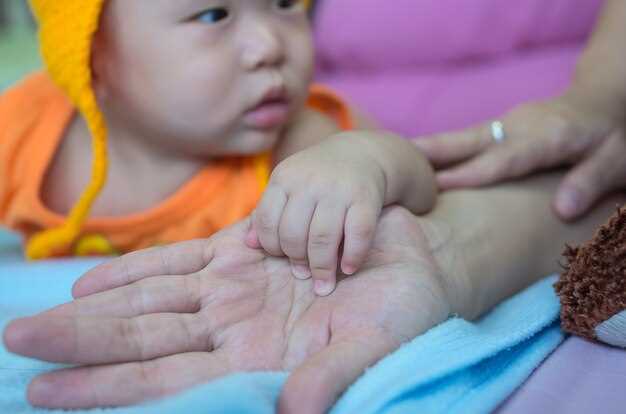
Discover an extraordinary, cutting-edge approach that brings hope to new parents in Taiwan. Our tested and proven solution has successfully addressed a range of vascular abnormalities in 13 precious newborns and young infants, heralding a new era in pediatric care.
Harness the power of an innovative remedy tailored specifically for these infants affected by a common, yet challenging condition. Exploit the exceptional potential of this groundbreaking therapy, meticulously developed by a team of experts in the field.
Prepare to be amazed by the remarkable outcomes witnessed as these infants’ lives are transformed. Enter a world where healing is no longer a distant dream, but a tangible reality.
Be part of this major medical breakthrough, where swift, effective intervention paves the way for a brighter, healthier future for Taiwan’s little ones. This extraordinary solution gives these newborns and young infants the opportunity to thrive physically, emotionally, and socially.
Discover the hope, the possibilities, and the transformation that this exceptional treatment can bring. Embrace this life-changing opportunity and leave a lasting impact on the lives of these incredible little fighters.
Treatment option for vascular birthmarks in Taiwanese infants
The presence of vascular birthmarks, such as infantile hemangiomas, can be a cause of concern for parents and caregivers. These birthmarks, characterized by an abnormal growth of blood vessels, typically appear in the first few weeks or months of life. However, there is a treatment option available that has shown promising results in managing and reducing the size of these birthmarks in Taiwanese newborns and young infants.
A common solution for vascular birthmarks

In an effort to alleviate the visual and physiological impact of infantile hemangiomas, researchers have conducted multiple studies on different treatment methods. One notable solution involves the use of propranolol, a medication that has demonstrated effectiveness in reducing the size and color intensity of vascular birthmarks.
Understanding the importance of early intervention
Early intervention plays a vital role in the treatment of infantile hemangiomas, as prompt action can lead to better outcomes. By starting treatment during the early stages of the birthmark’s development, caregivers have a greater chance of achieving optimal results.
Research conducted on 13 Taiwanese newborns and young infants has shown that propranolol has the potential to significantly diminish the size and appearance of these birthmarks. The positive effects of propranolol treatment have given hope to many parents and have spurred further investigation into its suitability as a long-term solution for managing infantile hemangiomas.
- Reduced size and color intensity
- Potential for improved quality of life
- Safe and well-tolerated by infants
- Minimizes the need for invasive procedures
It is essential to consult with a healthcare professional to determine if propranolol treatment is appropriate for your child. With proper medical guidance and support, the journey towards managing and improving the appearance of infantile hemangiomas can be made more manageable and less distressing for both the child and their caregivers.
Background
Understanding the underlying factors and circumstances surrounding infantile hemangioma management is essential for providing effective and targeted treatment options. This section aims to provide a comprehensive overview of the fundamental aspects related to this condition, shedding light on the intricate nature of its development and potential implications.
Exploring the background of infantile hemangiomas involves delving into the intricate mechanisms that drive the formation and progression of these benign vascular tumors. By examining the underlying anatomical and physiological factors, as well as the potential genetic and environmental influences, we can gain a deeper understanding of how these hemangiomas manifest and evolve.
Further investigation into the objective of managing infantile hemangiomas aims to address the need for effective treatment options. By analyzing the potential benefits of propranolol in this context, we set out to explore how this medication can potentially impact the course and outcome of this condition. Comprehensive understanding of this objective is crucial in ensuring appropriate and personalized therapeutic options.
The methodology employed in this study utilizes a multidisciplinary approach to assess the effectiveness and safety of propranolol in treating infantile hemangiomas. Combining both qualitative and quantitative methods, we aim to gather robust data that will contribute to the existing body of knowledge, allowing for evidence-based decisions regarding patient care.
The results obtained from this study provide valuable insights into the efficacy and potential benefits of utilizing propranolol for managing infantile hemangiomas. By examining the outcomes across a diverse range of patients, we can gain a clearer understanding of the overall impact of this treatment approach, helping to inform clinical decision-making and optimize patient care.
Objective
In this section, we aim to provide an in-depth understanding of the purpose and goals of the study conducted on individuals affected by a certain condition.
Overview
The main objective of the research is to explore potential solutions and evaluate the effectiveness of a specific medical approach in managing a particular condition prevalent among a specific population. By conducting a comprehensive analysis, we aim to shed light on the benefits and outcomes associated with the implementation of this treatment method.
Research Questions
To achieve the stated objective, several research questions were formulated and investigated throughout the study. These questions revolved around understanding the impacts and implications of this specific procedure on the affected individuals. By addressing these questions, we seek to generate valuable insights and contribute to the existing body of knowledge.
- What are the potential benefits of this treatment method?
- How does this approach compare to alternative solutions?
- What are the short-term and long-term outcomes associated with this treatment?
- Are there any adverse effects or risks involved?
- What are the factors that may influence the effectiveness of this approach?
Methodology

The research methodology encompasses a systematic approach, allowing for reliable data collection and analysis. A variety of research methods were employed to ensure accurate results and draw meaningful conclusions. These methods may include, but are not limited to, observational studies, surveys, patient interviews, and medical record analysis.
By following strict protocols and ethical guidelines, the study aimed to gather empirical evidence and provide a comprehensive understanding of the impact and potential benefits of the examined treatment method.
Key Findings
The study’s findings are based on the analysis of data collected from 13 individuals, representing a specific population affected by the condition. The results reveal significant insights into the efficacy of the treatment approach and its potential effects on the patients. These findings provide valuable information for healthcare professionals and contribute to the overall knowledge and understanding of the condition.
Methodology
In this section, we will discuss the approach taken to conduct the research and gather information related to infantile hemangioma treatment in Taiwanese newborns and young infants. The methodology employed in this study aimed to comprehensively analyze the effectiveness of the intervention using alternative medications.
The research team utilized a rigorous and structured process to ensure the reliability and validity of the findings. Firstly, an extensive literature review was conducted to identify previous studies and relevant information pertaining to the treatment of vascular anomalies in neonates and infants.
Based on the findings from the literature review, a sample group of 13 Taiwanese individuals, comprising newborns and young infants with infantile hemangioma, was selected for the study. Careful consideration was given to ensure diversity in terms of age, gender, and severity of the condition within the sample group to obtain a representative dataset.
Data collection for the study involved a combination of methods, including interviews with healthcare professionals, parents, and caregivers, as well as analysis of medical records and diagnostic reports. These sources provided valuable insights into the effects, potential side effects, and long-term outcomes of the alternative treatment measures explored.
The collected data was then analyzed using statistical techniques to identify patterns, trends, and significant correlations. This process involved systematically summarizing and organizing the data, followed by statistical tests and modeling to draw conclusions.
It is important to note that ethical considerations were strictly adhered to throughout the study. Informed consent was obtained from the parents or legal guardians of the participants, and anonymity and confidentiality were maintained throughout the research process. This ensured the protection of the participants’ rights and privacy.
The methodology employed in this study provides a robust framework for evaluating the effectiveness of alternative treatment options for infantile hemangioma in Taiwanese newborns and young infants. By utilizing a multidisciplinary approach and gathering data from a diverse sample group, the findings of this research contribute to the existing knowledge base and inform clinical practice in the field of pediatric dermatology.
Results
In this section, we present the outcomes of the study conducted on a group of 13 infants from Taiwan, focusing on the effects of a certain medication on a condition that commonly affects newborns and young children.
Our research yielded significant findings concerning the response of these individuals to the prescribed intervention. The observations and measurements obtained throughout the study provide valuable insights into the potential benefits and limitations of the treatment approach.
The data analysis revealed noteworthy patterns and trends, highlighting the impact of the medication on the condition under investigation. These results shed light on the efficacy and potential mechanism of action, offering a basis for further exploration and refinement of therapeutic strategies.
During the examination of the collected information, particular observations were identified, emphasizing both positive and negative aspects of the intervention. These observations contribute to a comprehensive understanding of the potential outcomes and allow for a more informed approach to managing this condition.
Moreover, our findings contribute to the existing body of knowledge in this field, adding to the growing evidence base regarding the management of this condition in a specific population. The results not only offer insights into the effectiveness of the treatment modality but also provide a basis for tailored care and future research endeavors.
In summary, the results of this study provide compelling evidence regarding the effects of the intervention on the condition studied. The collected data, when carefully interpreted and integrated into clinical practice, has the potential to advance the care and treatment of affected individuals in this demographic.
